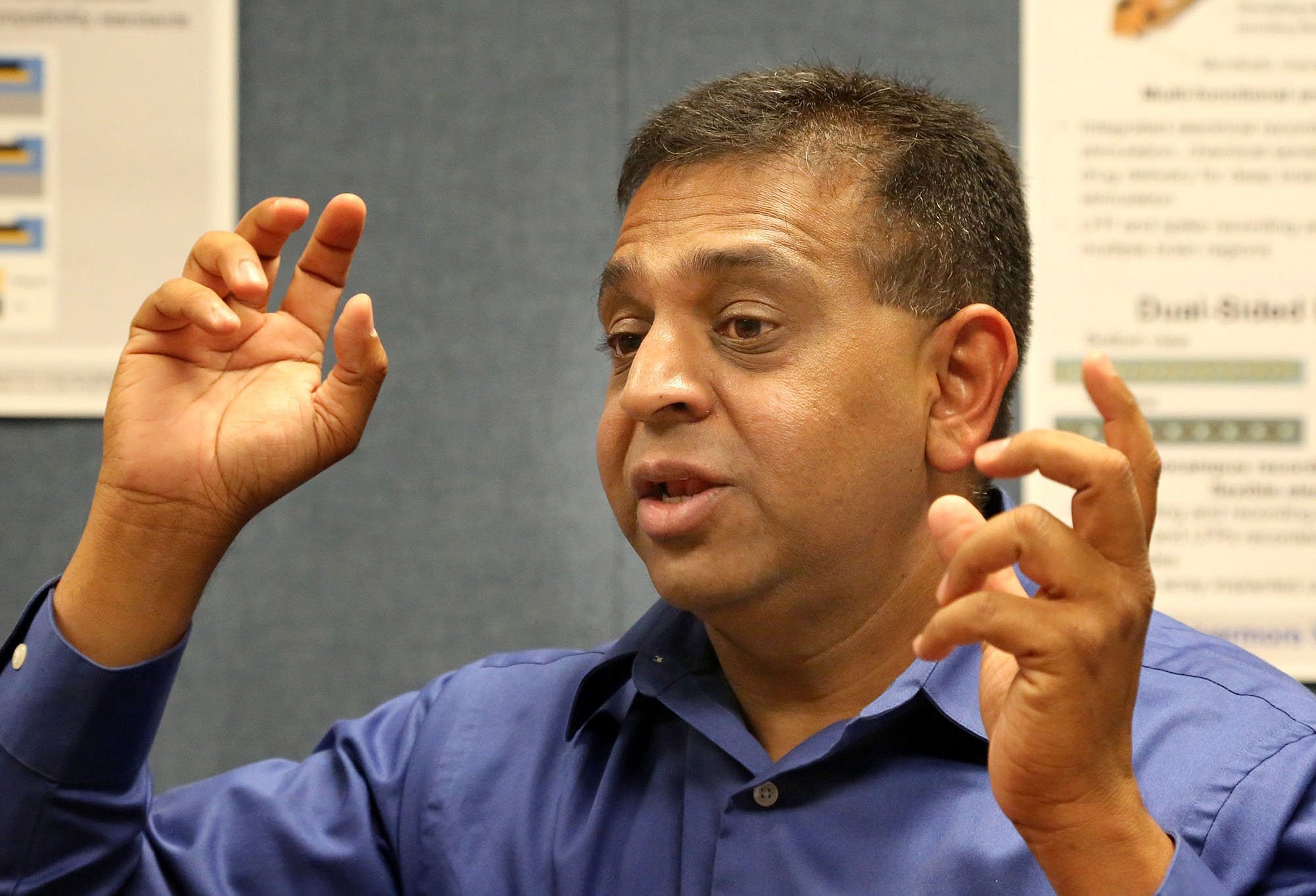LIVERMORE, Calif. — Deep inside Lawrence Livermore Laboratory’s Center for Bioengineering, scientist Sat Pannu and his research team are hard at work crafting spaghetti noodle-sized devices with a mundane appearance but an audacious goal: To rewire damaged human brains.
Fitted with dozens of tiny microelectrodes, each of these brain implants is intended to monitor the electrical activity of brains devastated by physical injury or mental illness — and provide the precise stimuli to help minds compensate for what they’ve lost.
It sounds fanciful, like something out of Hollywood. But building on technology more than a decade in the making, center director Pannu and his associates envision a time, not too many years away, when advanced, so-called deep-brain stimulation implants combat the ravages of post-traumatic stress disorder, traumatic brain injury, even chronic pain or addiction.
“This technology allows us to interface with the brain using hundreds, if not thousands, of electrodes,” Pannu said. “If you had these devices implanted in the brain, you could record (neural activity) and see how therapies are working in real time.”
Pannu’s $5.6 million project — which is in the early stages of animal testing — is part of an array of brain research underway at Lawrence Livermore, all of it linked to the implant technology. Members of the team have found success with artificial retinal implants, which are already giving some blind people crude, but functional, vision. Pannu’s Neural Technology group recently got a $2.5 million grant for a “neuroprosthetic” project that hopes to combine neural implants with tiny computers to help restore lost memory function.
The work is being driven by a Defense Department interested in treating the rash of brain injuries emerging from modern warfare, and President Barack Obama’s Brain Research through Advancing Innovative Neurotechnologies initiative, which aims to map the brain’s neurons to help target effective treatments.
According to Defense Advanced Research Projects Agency program manager Dr. Justin Sanchez, the next generation of brain implants could provide hope for the estimated 2.2 million veterans and active military personnel who have sought help for a mental health disorder.
“There’s a huge potential for this study to make a meaningful impact in those people who (sacrificed) for this country,” Sanchez said.
Using electrical currents, as Pannu’s implants do, to alter the nervous system is not a novel idea. Electric eels were used by the ancient Romans to treat migraines. Luigi Galvani — the real-life inspiration for Dr. Frankenstein — experimented with electricity to reanimate dead tissue. Doctors have prescribed electroshock therapies to treat depression, schizophrenia and other psychiatric disorders.
It’s long been clear that more targeted electrical stimulation could yield better and safer results, Pannu said, because you can manipulate damaged areas without affecting healthy brain tissue. Already, more than 100,000 people with Parkinson’s disease and other brain disorders have been implanted with deep-brain stimulation devices that improve their symptoms. But those devices are much less precise — the technical term is “lower resolution” — than what Pannu’s team hopes to build. The technological challenge is huge, because traumatic brain injury has a sweeping set of effects.
“With TBI you have many things that come from it — memory loss, changes in personality and other symptoms,” said scientist and team member Vanessa Tolosa. “The brain is a huge black box that no one understands. Here, we’re going to get a better understanding of the brain, and we’re hoping to come up with therapies that work. The impact is huge.”
But there’s a lot of work to be done first. Essentially, researchers want the implants to be able to encode, decode, record and transmit electrical signals that can tell a damaged brain what to do. To accomplish that, they must identify what areas of the brain are affected by various disorders, gain a better understanding of how groups of neurons in those areas communicate, and then fashion smaller electrodes that can interface with — and direct — those neurons.
An early version of the implants is currently being tested on animals, to analyze how memory and speech are formed. The Defense Department hopes to have a prototype implant that can both record and modulate brain activity ready for U.S Food and Drug Administration approval and testing on humans within five years.
Using MRIs and other imaging techniques to show where the devices should go, surgeons would drill small holes through the skull, implanting the devices in multiple areas of the brain.



